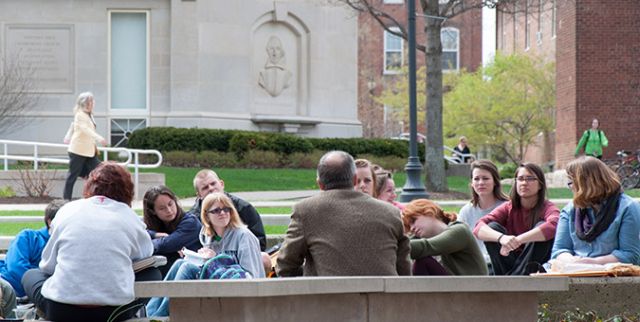
Philosophy Faculty Publications
Document Type
Article
Publication Date
2015
Publication Source
Nordic Studies in Pragmatism
Abstract
Joseph Margolis holds that both artworks and selves are ”culturally emergent entities." Culturally emergent entities are distinct from and not reducible to natural or physical entities. Artworks are thus not reducible to their physical media; a painting is thus not paint on canvas and music is not sound.
In a similar vein, selves or persons are not reducible to biology, and thought is not reducible to the physical brain. Both artworks and selves thus have two ongoing and inseparable ”evolutions”—one cultural and one physical. Rather than having fixed ”natures” that remain stable for any purpose other than numerical identity, artworks and selves have ”careers” due to their cultural evolution that change with the course and flux of history, interpretation and reinterpretation.
The question for this essay is how a Margolisian encultured artist, who is also an individual ”self," can construct an identifiable ”career” that is both from culture and develops culture constructively in a way that involves an individual, as well as collective, contribution. In answering this question I will provide a theory that shows how Margolis’ work on the artist as cultural agent leaves room for creative innovators within a cultural context.
In short, I claim that Margolis’ idea that a person is a thinking-and-doing practitioner that emerges from and works within a cultural context does allow for the agent to use that same context to acquire the tools and skills necessary to make something new. I will then consider how this innovation might be possible by making recourse to some theories of creativity from neuroscience and psychology.
This essay will focus on Margolis’ theory of the creative artist as cultural agent as supplemented with an account of the nature of the human being as a raw set of genetic materials and capacity for acquiring cultural competence. My claim is that this is the site for an adequate account of how some encultured persons are able to create exceptional innovations in artistic domains and others are not.
I agree with Margolis that it is true that innovation is not possible by any pre- or non-encultured self but I also think that extremes of cultural mastery and innovation, as in the case of highly creative and innovative artists, are not possible without an inborn potentiality to develop to a high level of cultural ability under the right conditions. This is not to deny Margolis’ theory of artists as cultural agents. Indeed, I accept Margolis’ view of the deep importance of culture to the development of the self and to the creative artist wholeheartedly.
I also agree that this is a crucial aspect of artistic agency and creativity that has been given short shrift in analytic aesthetics. My intention here is only to answer one question that is still left unanswered after understanding and acknowledging the importance of culture: How do we account for the disparity in ability in cultural agents and artists that cannot be attributed to cultural training and socio-historical factors? How do we account for the existence of the exceptionally creative artist in a situation where the cultural and socio-historical factors are roughly equivalent for others who demonstrate lesser amounts of creativity?
Inclusive pages
197-216
ISBN/ISSN
1799-3954
Document Version
Published Version
Copyright
Copyright © 2015, Aili W. Bresnahan and the Nordic Pragmatism Network; this work is licensed under a Creative Commons Attribution-NonCommercial 3.0 Unported License. Permission documentation is on file.
Publisher
Nordic Pragmatism Network
Peer Reviewed
yes
eCommons Citation
Bresnahan, Aili W., "How Artistic Creativity is Possible for Cultural Agents" (2015). Philosophy Faculty Publications. 15.
https://ecommons.udayton.edu/phl_fac_pub/15


